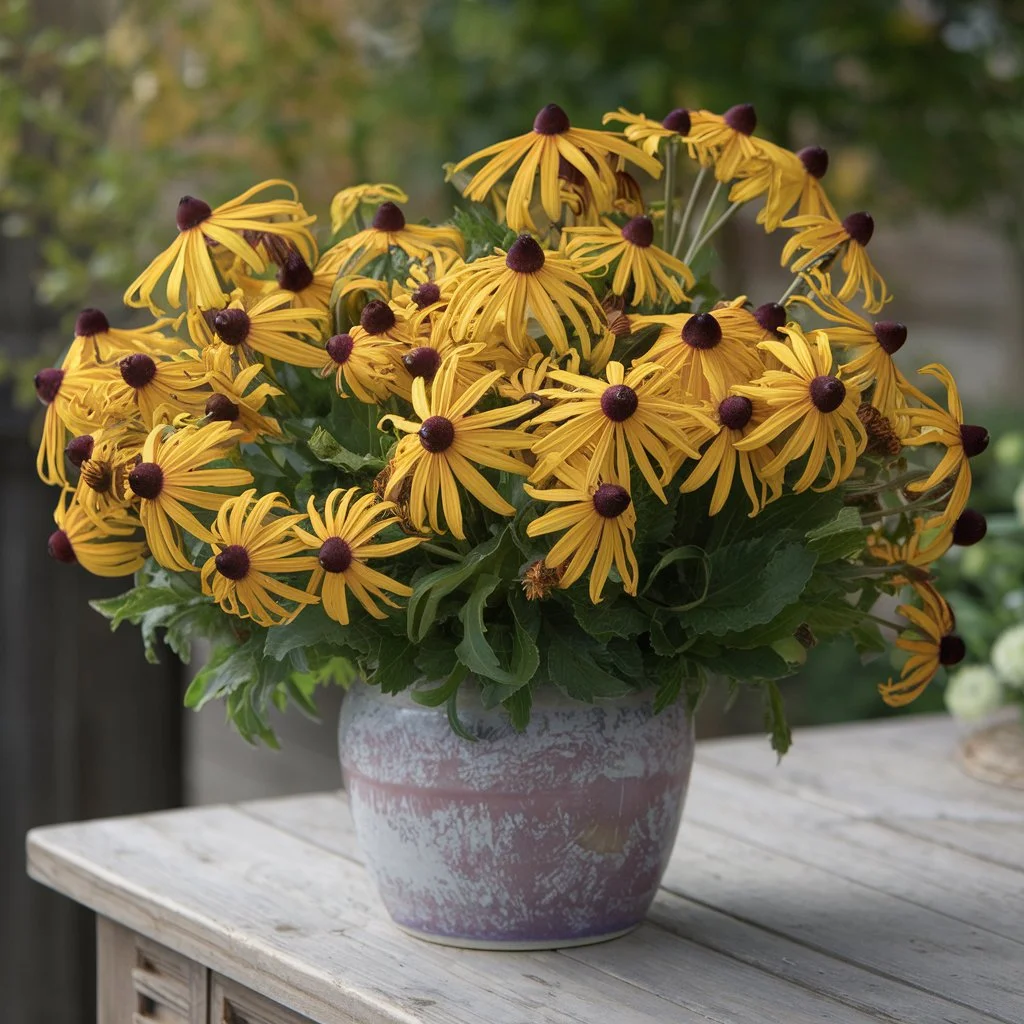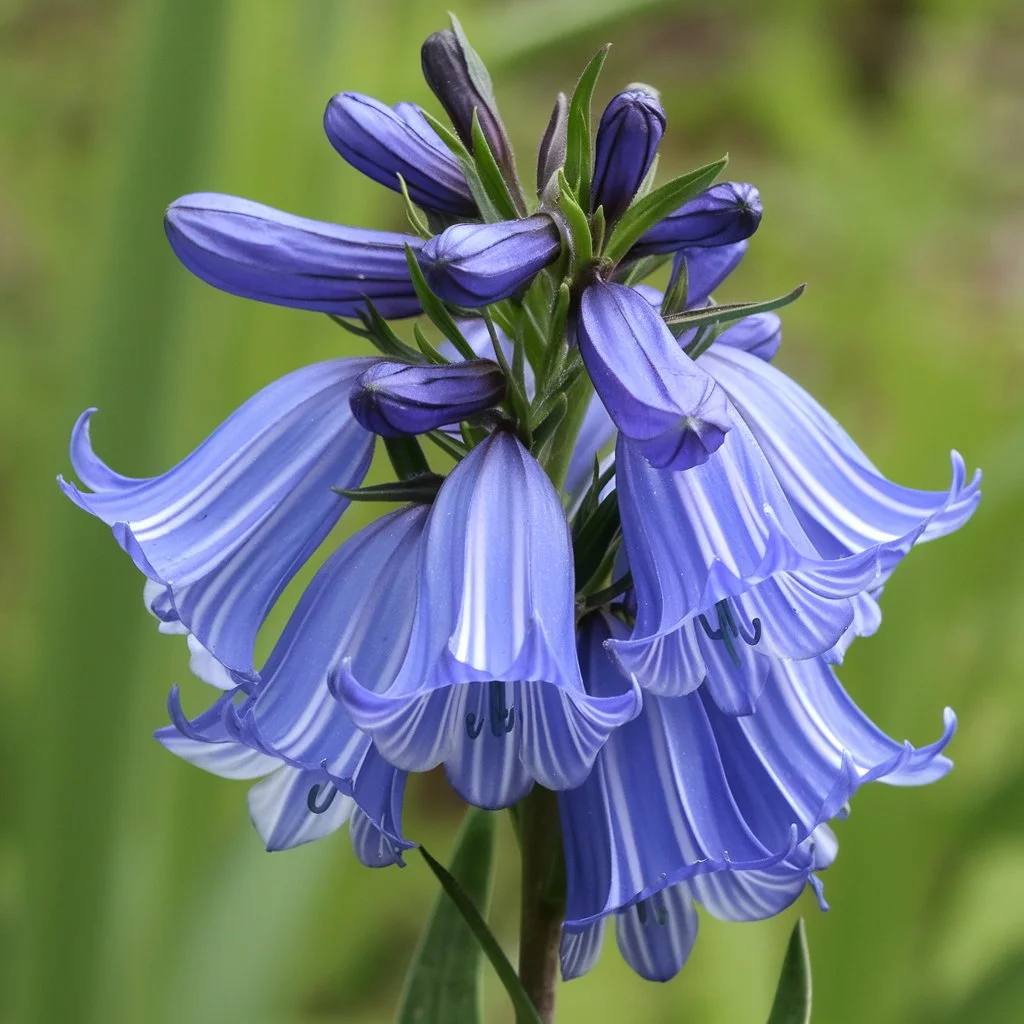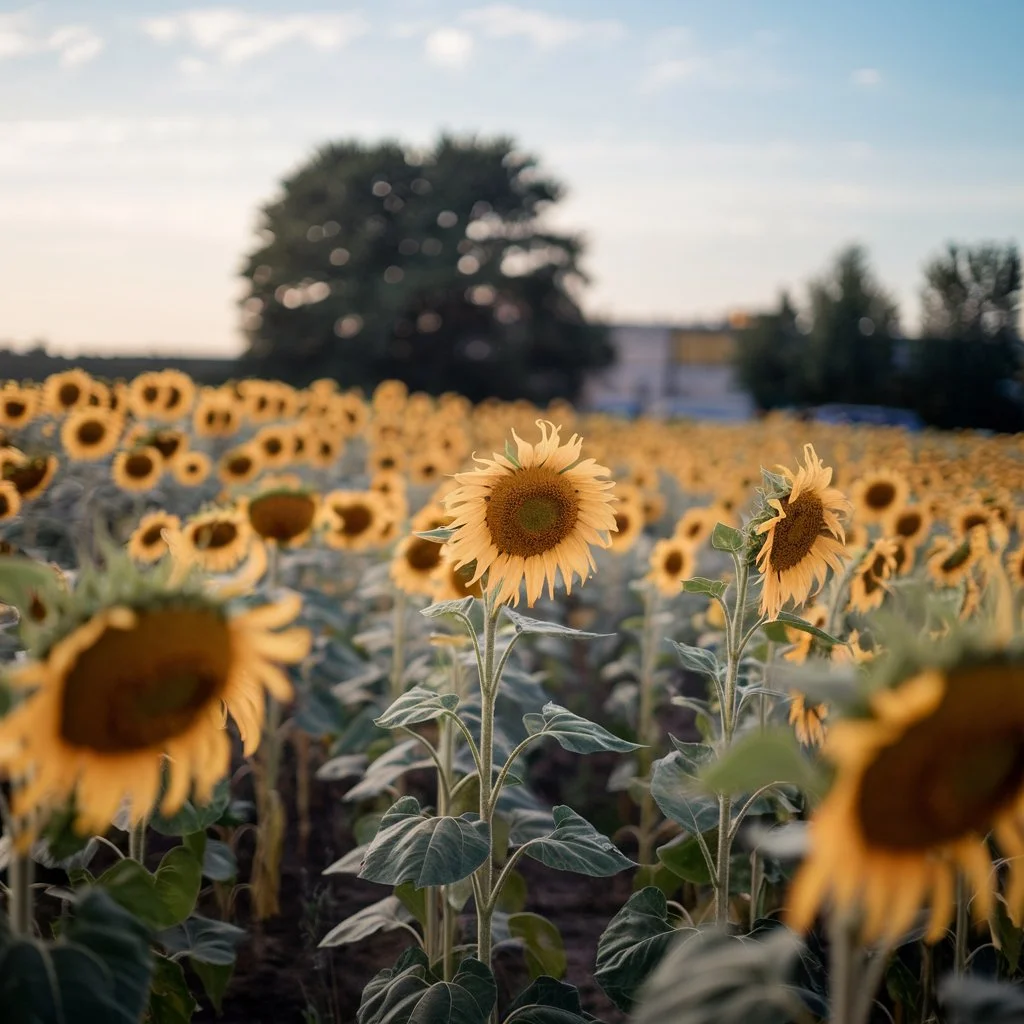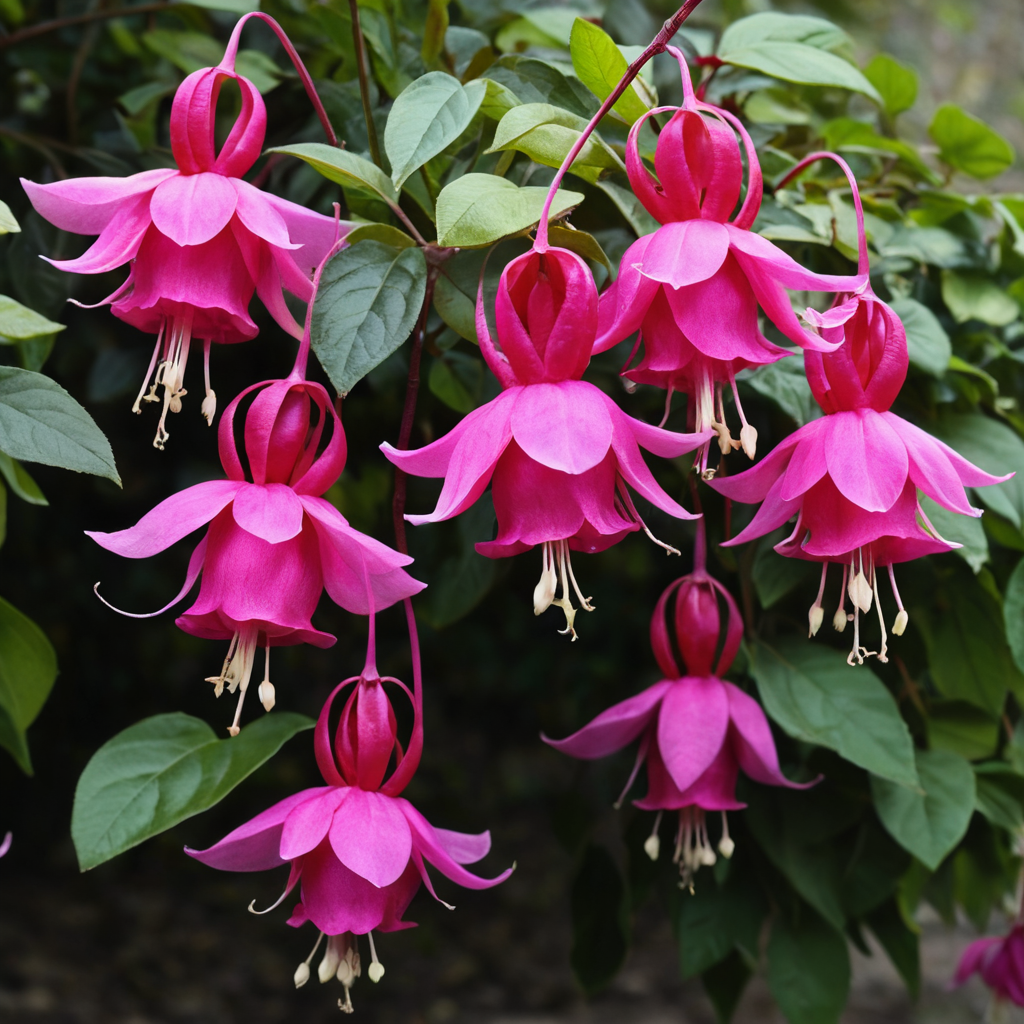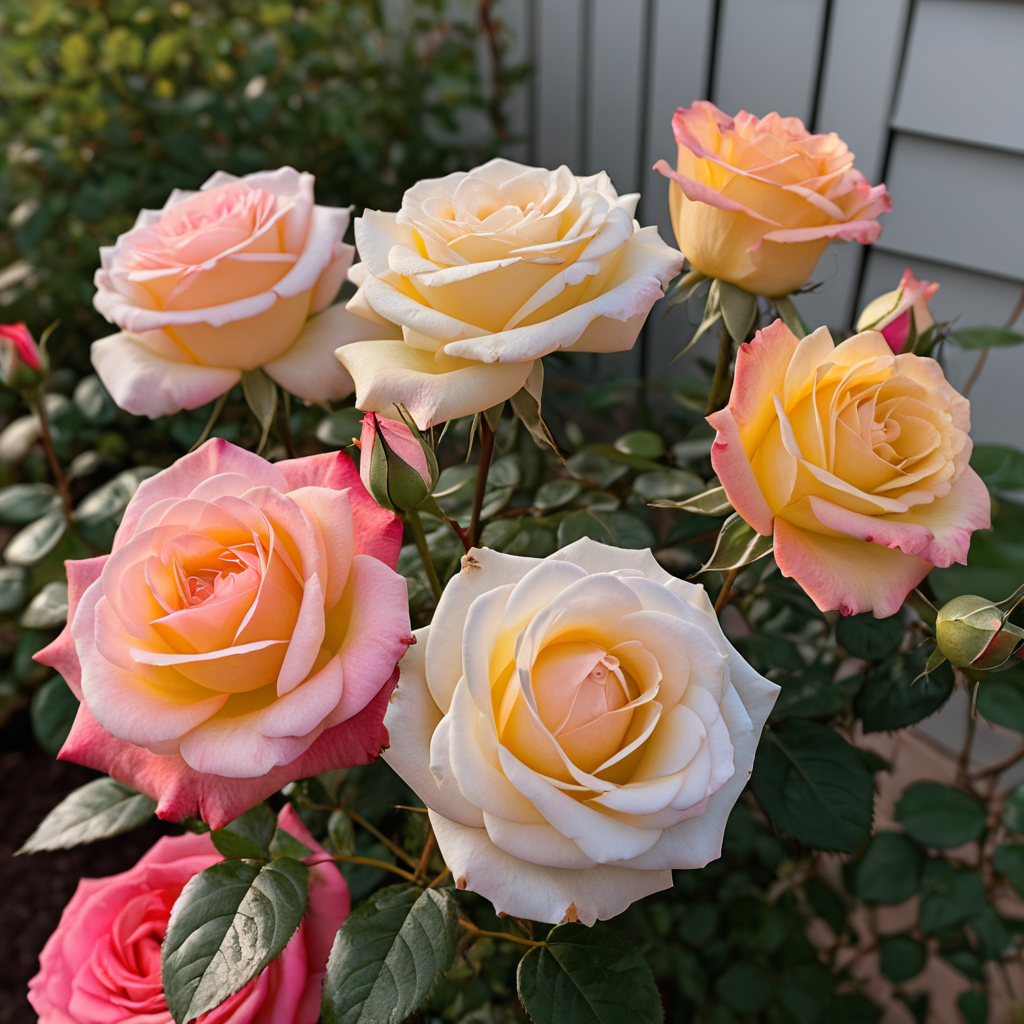Step into the lively Heleniums scene, where striking flowers and easy appeal are king! These sunny perennials, often called sneezeweed, are a garden lover’s ace in the hole for color, attracting pollinators, and ease of upkeep. It doesn’t matter if you’re a garden pro or just starting out, heleniums are primed to make your garden, and your day, shine brighter.
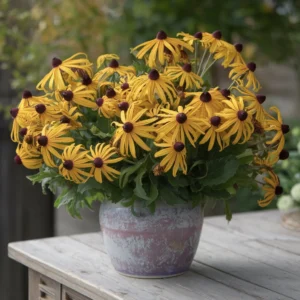
Here’s the kicker: heleniums are robust and gratifying, but their eccentricities can make or break your garden. No stress, though—this guide has all the info you require. From deciding the ideal location to revealing the key to ceaseless blossoming, we’re on your side.
Pumped to revamp your garden into a lively, pollinator haven? Let’s plunge into the vivid, diverse universe of heleniums—your garden will appreciate it! Known as sneezeweed, heleniums are resilient perennials recognized for their bright, daisy-like flowers in hues of red, yellow, and orange.
With their adaptability, extended blossoming season, and knack for attracting pollinators, they’re a garden favorite. This guide equips you with thorough instructions to plant, nurture, and sustain healthy heleniums, ensuring your garden flourishes with their jovial ambiance.
Understanding Heleniums
What You Need to Know About Heleniums
Ever heard of Heleniums? They’re also called sneezeweed. But don’t fret, sneezing not included! These perennials brighten up gardens with their flashy, daisy-like flowers. They come from North and South America and nature lovers have adored them for years. Heleniums have tall, strong stems and deep, brilliant colors. They gift gardens with both charm and shape. So, they are often picked for edges and areas meant for pollinators. Let’s look more into what makes these blossoms stand out and why you should consider them for your garden!
Overview of Their Characteristics and Origins
- Height: Heleniums can reach heights of 4 feet, making them perfect for the rear of flower beds and along garden borders. They introduce vertical variety and fill out your garden’s blank spots with structure and color.
- Flowers: Heleniums possess striking, radiant blooms. Their daisy-like flowers display warm, lively colors like yellow, red, and orange, resembling small streaks of sunshine in your garden. These joyous flowers will undoubtedly take center stage wherever they grow.
- Stems: These plants feature thick, firm stems that can support their blossoms, making a dependable feature in your garden. They resist bending or drooping, even under windy or rainy conditions, which results in less upkeep for you!
- Native Regions: Heleniums naturally grow in North and South America, more commonly in the central and eastern United States.
However, they’re also present in parts of South America. Their ability to thrive in a range of climates makes them an adaptable option for different regions.
Seasonal Blooming Patterns
Heleniums, those late summer to fall showstoppers, kick off their colorful spectacle when earlier blossoms start their farewell. They maintain this vibrant performance deep into fall, lending them a special place in gardeners’ hearts. Many flowers peter out by September, but not heleniums. They keep the garden lively and radiant, sprinkling warm hues as chilly days creep in. The longevity of these blossoms is another plus — their colors remain fresh for weeks, allowing ample time for onlookers to bask in their charm.
Common Uses in Landscaping and Gardens
- Border Scenes & Plant Beds: Heleniums are great! They’re tall with robust stems—ideal for providing vertical accents in garden edges or varied plant beds. Place them behind shorter blooms for a step-by-step look, offering a captivating sight in the back.
- Insect Gardens: Guess who adores heleniums? Bees, butterflies, and other precious bugs. These nectar-filled blooms serve as a prime food station for pollinators, making them top-notch for people wanting to foster an insect-friendly haven.
- Indoor Blooms: Because they’re sturdy and bloom for long, heleniums are stellar as indoor flowers. Carry a small part of your outdoor haven into your home with arrangements that persist for weeks—a splendid way to cheer up your living space.
- Creature Enclosure: More than luring pollinators, heleniums offer seeds to birds, notably in autumn. They’re an excellent supplement to a garden aimed to benefit local creatures, supplying food and safe harbor for various animals. Considering all these wonderful features, no shock that gardeners favor heleniums when they desire to inject color, pattern, and ecological worth to their greenscapes!
Setting Up for Success
Planning and Preparation
Before we dive in, let’s discuss setting up a steady base for your helenium garden. These blossoms are tough and carefree, but a little foresight prevents usual errors and supports your plants for a long, joyful existence. After all, planning now cuts back future labor—and leads to a garden teeming with peppy, vigorous flowers!
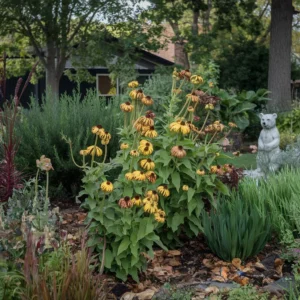
Importance of Planning for a Successful Helenium Garden
Imagine your helenium garden as a theater, the blooming heleniums are the main performers. Without the right prep work, they can’t leave a great impression. Sparing a moment to plan ensures they have the ideal conditions to flourish. Thoughts like location choice and best plant pals make a big change. Believe us—your future self plus your lovely heleniums will be thankful!
Factors to Consider: Garden Layout, Space, and Companion Plants
- Planting Guide: Heleniums stand tall. Place them where they won’t be eclipsed by shorter plants. Either at the back of borders or amid mixed beds is ideal. They’ll stand out and form a picturesque backdrop, yet let the smaller plants in front have their glory.
- Area: Heleniums love space to expand. Don’t stifle them! Each Helenium needs about a yard of space. Avoid competition for sun and feed. If they’re bunched up, they could become twiggy and frail, and with limited air circulation, disease could creep in.
- Buddies: Heleniums like company! Team them up with similar sun-seekers and dry-resilient plants such as coneflowers, black-eyed Susans, and asters. Heleniums’ vibrant colors create a stunning contrast with their companions. Their robust stems offer support to weaker plants. When matched with grasses and other leafy plants, your Heleniums will be the center of attention in your garden arrangement.
Where to Plant Heleniums
Got a firm plan? Great, next task, pick the perfect place for your heleniums. These flowers are somewhat flexible. Yet, they have certain likes and dislikes regarding sunlight, wind shelter, and soil condition. Let’s nail it from the beginning!
Ideal Locations: Sunlight Needs, Wind Protection
- Sunlight: Heleniums love the sun. For strong growth and max bloom, they need 6 direct sunny hours every day. Plant them in shady spots, and they may not flower and grow well.
- Wind Protection: Heleniums are hardy, but strong wind can turn them droopy. If your garden is frequently windy, look for a sheltered spot. A fence, a hedge, or another plant that breaks the wind naturally could help.
Soil Requirements and Drainage Considerations
Heleniums thrive best in fertile, well-draining soil. If your soil is heavy clay, it holds too much water, which can result in root rot. On the other hand, poor soil could hinder growth. Try to provide loamy soil that’s slightly acidic (pH 6-7). Good drainage is essential. For soil that’s too compact or drains poorly, a solution is to add organic matter. Compost or well-rotted manure can effectively increase both its drainage and structure.
Preparing Your Garden Bed
You’ve found the ideal location. Great! Now, it’s all about getting your garden bed in top shape. Your heleniums need the right nutrients and clear drainage to grow well. So, here’s your guide to setting up your bed, just perfect!
Step-by-Step Guide to Soil Preparation and Enrichment
- Prepare the Ground: First, get rid of any competing plants, grass, or leftover debris. Heleniums prefer their own space, so make sure they have a neat, uncluttered place to blossom.
- Work the Earth: With a gardening fork or spade, break up the soil until it’s roughly a foot deep. Doing this gives the roots plenty of room to grow strong and deep.
- Improve the Earth: Stir in natural materials like compost or time-aged manure to make the soil richer and enhance its overall makeup. If your earth is mostly clay, sand might be needed for better water flow.
- Smooth the Area: Once you’ve mixed in these enrichments, use a rake to smooth out the soil. A level surface ensures water spreads equally and stops pesky puddles from forming.
Testing Soil pH and Adding Necessary Amendments
Your heleniums’ health depends greatly on your soil’s pH. These plants like a bit of acidity in the soil, with the ideal pH falling between 6 and 7. Want to know your soil’s pH? Get a soil test kit – they’re commonly found in garden centers. Too much alkalinity in your soil (pH over 7)? Solve this by adding soil sulfur or peat moss. Conversely, if your soil is overly acidic (pH less than 6), add lime to increase the pH. Making these pH adjustments enables your heleniums to feed on the necessary nutrients, fostering robust and vigorous growth.
Now that you’ve prepared the soil and picked the perfect location, it’s time to plant your heleniums. Let’s see them thrive. Enjoy your gardening!
Planting and Growing Heleniums
How to Plant Heleniums
Starting your garden with heleniums brings zingy flowers and friendly bugs aplenty! Whether you start with seeds, young plants, or grown ones, it’s easy and gratifying. Here’s how to plant your heleniums and get them geared up to grow:
Step-by-Step Planting Guide (Seeds, Seedlings, or Mature Plants)
- Seeds to Blooms: Got sneezeweed flower seeds? Start indoors. You need about 8-10 weeks before the last frost. Your seed-starting mix should drain well. Keep them in a bright, warm place. Once the seedlings toughen up, move them outdoors. But only after frost is no longer a threat.
- Getting Seedlings Planted: Working with helenium seedlings? Dig a hole. Make it twice as wide as the plant’s root ball. No need to dig deeper. Put the seedling in the hole. Fill it with soil. The root ball’s top should match the soil level around it. Water it well, so the soil settles around the roots.
- Planting Full-Grown Plants: Got mature sneezeweed plants? The steps are similar. Dig a hole. It should fit the root ball. Carefully take the plant out of its pot. Gently put it in the hole. Add the surrounding soil and water thoroughly.
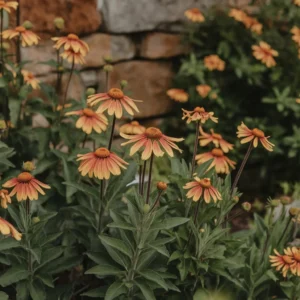
Recommended Planting Season and Spacing Guidelines
- Perfect Planting Time: Spring – specifically early to mid-spring, is ideal for planting helenium flowers. Once frost is no longer an issue, start planting. Whether it’s orange helenium or other types, wait until the ground warms to about 60°F (15°C). Your plants’ roots will thank you.
- Room to Grow: For heleniums to prosper, they need space. About 18 to 24 inches between each one does the trick. This way, they can grow without fighting for light or nutrients.
Framework is key for tall ones like sneezeweed plants. Making sure they don’t crowd other plants is vital.Caring for Heleniums in Growth
Once your helenium plants are in the ground, the next step is ensuring they grow strong and healthy. Here’s how to care for your helenium flowers as they establish themselves:
Watering Needs Throughout the Growth Stages
- Starting Care for New Heleniums: Right after planting your sneezeweed blossoms, give them a solid drink. This will help the roots find their footing. In the beginning weeks, keep the dirt just damp enough. Avoid giving too much water. Helenium types hate having “wet feet.” It often leads to the roots decaying.
- Continued Watering: Once your helenium sprouts are settled, give them water regularly. This is particularly important during hot, dry periods. A moderately wet environment helps them flourish, but they don’t like being in too muddy conditions. Deep watering is the way to go. It spurs the growth of deeper roots and makes them heat and drought resistant.
Fertilization: Types and Schedules
- Fertilizer Choices: Helenium blossoms don’t need tons of food, yet additional nourishment during growth can aid them. Feed with an even, slow-release fertilizer or natural compost. A liquid fertilizer can also be helpful for an extra nutrient boost when they’re growing.
- When to Fertilize: Scatter fertilizer as fresh growth appears in early spring, then once more in the heart of summer to help flowers bloom longer. Be mindful though, over-fertilizing can lead to plentiful foliage but fewer blossoms, especially in the helenium variety that’s orange.
Staking and Supporting Tall Varieties
Your heleniums, particularly tall ones like sneezeweed, may need help staying upright. They could flop over without support. Using stakes can keep your flowers sturdy and strong during their growth period.
- Staking Guide: Place stakes into the dirt, a bit distant from the plant’s root, and lightly fasten the shoots to the stakes with garden string or gentle plant ties. This gives the sneezeweed blossom the chance to reach high without hurting the shoots. Keep an eye on the ties all year round to make sure they’re not squeezing too hard, which could harm the plant.
By adhering to these hints for planting and nurturing your helenium flowers, you’re a step closer to a garden brimming with stunning helenium blossoms. With devoted attention, your orange helenium and other lively types will bloom impressively in the seasons ahead!
Long-Term Care and Maintenance
Caring for Heleniums After They Bloom
After your helenium flowers blooms dazzle with their bright hues, they need proper upkeep to keep growing vigorously. Caring for them after they bloom guarantees their health and strength for the next bloom cycle. Here’s your guide to making your sneezeweed flowers shine at their finest!
Deadheading Flowers for Continuous Blooming
Keeping your helenium flowers neat? Try deadheading. This means you take off blooms that are past their prime. It’s neat and it helps your flowers bloom more. This is true for types like the orange helenium. More deadheading means more new blooms and a longer flowering time right into fall. Just use sharp gardening shears to snip off old blooms at the stem’s base. It’ll help your plant focus on producing new blooms. Plus, it stops seeds from forming which might otherwise take energy from blooming.
Pruning for Shape and Health
To keep your sneezeweed plants fresh and well-formed, trimming works wonders. Post the bloom season, cut away wilted or harmed leaves. This boosts air flow and wards off fungus. If your helenium plants seem too high or wild, cut them short. This prompts fresh growth and a neater appearance. As spring begins, consider removing left-over stems from last year. This paves the way for new growth.
Seasonal Transitions and Preparing Plants for Dormancy
When chillier days near, it’s the right moment to ready your helenium types for their sleepy period. Given that heleniums are perennials, showing up each year, looking after them rightly helps them weather winter. Here are your steps:
When frost first hits, trim off lifeless or drooping leaves. This stops illness and lets the plant save energy. Pile mulch around your plants’ base for safeguarding the roots from chilly weather.
A hearty amount of mulch aids in controlling soil temperature and guarding your plants from sudden freezing weather. Stand by until the weather becomes colder to cut down the stems.
This lends support during wintertime, and numerous helenium blooms add appeal in winter as their seed heads draw in birds.
Propagating Heleniums
Looking to increase your helenium plants? Propagation helps you obtain additional, gorgeous flowers without incurring annual purchases. The methods of propagation vary, each offering unique procedures and advantages. So, here’s how to produce more sneezeweed blooms for sharing or expanding your garden.
Methods: Seed, Division, or Cuttings
- Seeds: Planting seeds might be a bit slow, but it’s a cool and rewarding way to grow helenium flowers. Remember, seedlings might need some time to fully grow and blossom.
- Division: Dividing plants is pretty easy and reliable. Every couple of years, split your helenium plants’ roots to make new ones. This method breathes new life into your plants and promotes strong, healthy growth.
- Cuttings: Another way to grow sneezeweed plants is through cuttings. Do this in late spring or early summer. Choose a healthy plant, remove the bottom leaves, and place it in water or damp soil until roots appear.
Step-by-Step Guide to Each Propagation Technique
- Seed Propagation:
- Pick up seeds from your helenium flowers after the bloom dies back and the seed heads dry out.
- Begin planting seeds indoors around 8-10 weeks ahead of the last frost. Use a high-quality seed-starting mix in a seed tray.
- Ensure they get plenty of warmth and light. When the seedlings look robust, move them to your garden as the climate gets milder.
- Division Propagation:
- When spring is just starting or fall is about to end, carefully unearth your helenium plants’ root clusters.
- Use a pointy garden knife or spade, making sure to split the cluster into tinier parts.
- Double-check that every division boasts a sound root network. After splitting, put the parts on a ready bed or within a pot, water them generously, and proceed with the usual care routine.
- Cutting Propagation:
- Get small snippets, about 4 to 6 inches, from a robust helenium plant. Best timeframe? Late spring or the beginning of summer. Next, get rid of the leaves at the bottom.
- You can optionally dunk the cut side in a rooting hormone. Ready for the final step? Put your snippets into a pot filled with damp soil.
- Find a warm, shadowy corner for them to chill. Wait for a few weeks. Voila! You’ll see roots sprouting.
Problem-Solving and Troubleshooting
Common Pests and Diseases
Even tough helenium blossoms might face some difficulties. But don’t worry! With the right info, you can see and tackle any bugs or sicknesses before they become big problems. So, let’s look at the usual problems helenium plants run into and ways to keep your flower healthy!
Identifying Potential Threats to Heleniums (Aphids, Rust, etc.)
- Aphids: Small but mighty, these juice-guzzling bugs can cause serious trouble for your helenium plants. They can turn leaves yellow and hinder growth. Having a sweet spot for the fresh, succulent growth of sneezeweed flowers, aphids might not eliminate the plant completely. However, they do have a knack for harming the greenery and spreading illnesses.
- Rust : is a type of fungal disease that results in rusty-orange splotches based on sneezeweed plants’ leaves. Over time, this disease gradually destroys the plant’s health. Humidity promotes its growth, especially in areas with low air movement.
- Powdery Mildew: If you see a white, dusty layer on the leaves, it suggests powdery mildew. This fungus loves cool, moist shadows. It can curb the rise of helenium flowers and trigger leaves to fall off early.
- Slugs and Snails: These little creatures enjoy nibbling on helenium plant stems and leaves. This is particularly true in the cool and damp period of the year.
Preventative Care and Treatment Options
Protecting your helenium varieties from pests and disease requires some careful actions throughout the growth cycle:
- To tackle Aphids: Blast them with powerful water jets to displace them from your helenium blooms. Introduce friendly bugs such as ladybugs. Alternatively, opt for insecticidal soap for more specific action.
- Here’s the action plan against Rust: Carefully remove and get rid of leaves showing signs of infection. Avoid pouring water directly over your plants, this can help rust spread. If rust keeps coming back, it might be time to use a rust-controlling fungicide.
- With Powdery Mildew, do this. Let more air flow around your plants. How? Thin them out. Too many? Avoid packing them in. Use a fungicide if you need. But, is it safe for sneezeweed plants? Check that. Beat mildew with baking soda too. Mix it with water, simple homemade solution.
- When dealing with slugs and snails: Consider using beer traps or putting copper tape around your helenium plants to keep them away. Always remember that you can gather these critters by hand during their peak times in the evening.
Growing Heleniums: Troubleshooting Tips
Helenium plants, while mostly simple to grow, can sometimes have a hiccup or two. Let’s learn how to tackle these usual hitches and put your sneezeweed blossoms in bloom again!
Addressing Common Growth Issues: Stunted Growth, Lack of Blooms, etc.
- Slow Growth: Weak stems or slow development in your helenium plants might point to low-quality soil, not enough sunlight, or insufficient watering. Your plants need a minimum of 6 hours of light each day. Adding compost to the soil can boost nutrients. Water thoroughly and regularly, but avoid giving them too much.
- Blooms Not Appearing? Your helenium flowers might not be flowering right. It could be because of stress or bad growth surroundings. Getting enough sunlight? Or maybe you’re using a lot of nitrogen fertilizer, which makes leaves grow instead of flowers? You should change when you fertilize and make sure they get lots of sunlight, so your sneezeweed flowers will bloom amazingly!
Environmental Stressors and Their Solutions
At times, kinds of helenium might react to stuff like changing temperatures, strong winds, or lack of rain. Here’s how to ease these pressures:
- Weather Woes: Sudden changes in temperature can be bad for your helenium plants. Really hot days or surprise cold waves can hurt their leaves or even freeze them. If you’re living in a place where the weather can be weirdly hot or cold, try to give some shade in the hot afternoons. Or when it gets cold all of a sudden, cover your plants to keep them safe.
- When the wind is strong, helenium plants, particularly the tall ones of orange variety, may suffer. Their stems might snap or twist. But don’t worry your plants can defend against this! Things like stakes, windbreaks, or even taller bushes can provide a shield from the wind’s powerful gusts.
- Sneezeweed plants can handle a bit of thirst, but when it’s extra dry, they’ll be grateful for a drink. It’s important to keep the ground where they grow not totally dried up, and spreading mulch around can stop water from escaping. Keeping up this water routine when it’s scorcher hot will make sure your sneezeweed blossoms stay strong and bloom beautifully.
By managing everyday pests, diseases, and growth problems, your helenium plants will look great all season. Proper care and attention mean your sneezeweed flowers will do well, giving you beautiful blossoms each year!
Varieties and Design Inspiration
Popular Helenium Varieties
If you’re on the hunt for the ideal helenium plant, know that options abound. Each type holds its own charm. Maybe you fancy vibrant orange heleniums, or perhaps you seek a more nuanced color mix. Regardless, there are flowers for every preference. Let’s explore a few superstar heleniums and see what makes them extraordinary!
Overview of Top Varieties and Their Unique Features
- ‘Mardi Gras‘ – What a spectacular sight! It’s known for its stunning mix of deep red, orange, and yellow flowers. ‘Mardi Gras’ never fails to command attention in any garden. Gardeners craving bold, vibrant hues that persist through the season absolutely love it.
- ‘Helena‘ – Standing tall among helenium types, ‘Helena’ stretches five feet high and blooms vibrant orange and yellow blossoms. It’s ideal if you desire height in your garden and if you want to invite bees and butterflies.
- ‘Moerheim Beauty‘ is a remarkable variety of sneezeweed. It stands out with its big, bright orange flowers, subtly touched with red. People really adore it because it brings joy for a long time, making it an excellent choice for gardens in the later seasons.
- ‘Ruby Tuesday‘, a wonderful choice for those seeking compactness. Its stunning ruby-red blooms standout and they are ideal for little gardens or pots. Notably, it’s among the early blossomers of helenium flowers, giving a pop of bright color to your garden just as the season begins.
Recommendations for Different Garden Styles
Choosing helenium types for your garden requires thinking about your garden’s look and function. Here are a few suggestions for different garden themes:
- Cottage Gardens: For those who cherish whimsical, wildflower gardens, ‘Moerheim Beauty’ and ‘Mardi Gras’ fit right in. With their bright hues and enduring flowers, they’re made for laid-back, nature-style gardens.
- Modern Gardens: ‘Helena’ and ‘Ruby Tuesday’ are perfect for a stylish, up-to-date design. They bring in a sense of vertical dimension and order. Their strong, neat features and inviting hues contrast well with simple design aspects.
- Bee-Friendly Flowers: Helenium plants are loved by bees, butterflies, and helpful bugs. Yet, ‘Helena’ and ‘Mardi Gras’ are the top picks. Their big, inviting flowers and sugary nectar pull in the pollinators.
Design Ideas with Heleniums
Helenium flowers are not only lovely but also flexible! These vibrant petals adapt to many garden styles, from cozy cottages to ones favoring pollinators. Discover ways to let your helenium plants shine and stand out in your garden layout.
Integrating Heleniums into Perennial Borders and Pollinator Gardens
Displaying your helenium flowers effectively can be achieved through their inclusion in perennial borders. Thanks to their tallness and vibrant color, they get a spotlight when you put them in the middle or at the back of these borders. Match them up with other perennials that bloom late, such as coneflowers, asters, and rudbeckias. This creates a dazzling spectacle of autumn hues.
- Bee-attracting Gardens: Helenium plants are perfect for gardens that cater to pollinators because of their brightly colored blossoms and sweet nectar. Mix them with other varieties that pollinators love, such as lavender, echinacea, and salvias. This combo makes a delightful refuge for bees and butterflies. On top of admiring the beauty of these sneezeweed blooms, you’ll foster local wildlife too.
Color Combinations and Seasonal Planting Tips
Helenium plants display a wealth of color that is truly breathtaking. Think hot reds, vivid oranges, and vibrant yellows. Now, mix them with other fiery-colored blossoms like marigolds or dahlias, it’s incredible. Although, if you’re looking for relaxation, why not pair these helenium flowers with cool-colored plants? Maybe lavender or blue salvia. This provides a serene contrast.
- Seasonal Planting Guide: In the early spring, plant helenium flowers. You’ll experience a lengthy display of color. Plant them according to the blooming schedule of other perennials. This way, you’ll have a never-ending parade of lively colors, season after season. Combine your helenium types with early bloomers, like daffodils or tulips. This makes sure your garden is overflowing with color, from the start of spring to the late fall.
If you’re crafting a garden rich in vivid hues or a sanctuary for pollinators, helenium plants are a remarkable choice. Picking the proper varieties and thoughtfully matching them with other flora guarantees your garden’s brilliance throughout the season!
Advanced Care and Special Topics
Overwintering Heleniums
Maintaining helenium plants isn’t just a summer task. Appropriate winter care will help your helenium blooms return vibrant and lovely every season. Here’s your guide to safeguarding your sneezeweed blossoms throughout winter, making sure they’re set to flower anew with the arrival of spring.
- Scaling Down: Once the initial frost hits, prune the wilted stalks of your heleniums. Retain around 3–4 inches of stem above soil. This gives the plant winter protection and creates a shield to keep precipitation away from the roots.
- Mulching: Spread a dense covering of mulch, around 3–4 inches, encircling your helenium assortments. It will cocoon the soil, insulating the roots against freezing cold. It’s strictly essential for sneezeweed varieties located in regions that experience severe winters.
- Protecting from Wind: If your helenium flowers are in a spot with a lot of wind, you might want to think about using a short-term windbreak. This could be a line of shrubs or a fence. It helps shield them from strong winter winds. These winds can dry up and harm the plant.
Follow these easy steps to prepare your helenium flowers for winter. They’ll be all set to flower beautifully when warm weather returns!
Potting and Repotting Heleniums
Usually, Helenium plants are planted in the soil. Yet, small spaces or patios make perfect homes for container-grown Heleniums too. If pots are your choice for nurturing these blossoms, here are tips for giving them the top-notch care they need.
- Picking the Perfect Pot: Opt for a pot that adequately fits your sneezeweed flower’s roots. Make sure it has decent drainage to steer clear of excess water, which could cause root rot.
- Repotting: Your helenium plants might grow big and need more space after a while. Every two years, maybe around spring start, it’s good to change their pot for a bigger one. This also changes their soil, which can help them grow better. When you’re moving them to another pot, be gentle. Loosen the roots first, then put the plant in the new pot. Add new potting mix around the roots.
- Planting Mix: A high-quality, drainable planting blend works great. Add a bit of plant food or natural compost for a bonus. This gives your helenium types a growth boost.
By potting and repotting correctly, your helenium blooms can flourish in pots, creating a lively splash of hue wherever they are placed.
Encouraging More Blooms
Looking to boost your helenium plant’s blooming power? By following a couple of easy suggestions, you can spark your sneezeweed flowers into continually furnishing lively blossoms all through the growth phase.
- Here’s a quick tip: Trim off old, faded blooms down to where the flower stem begins. This directs the plant’s power into making new flowers instead of seeds. With this action, your helenium flowers can bloom longer and maintain their vibrancy.
- Plant Food: Helenium types really like a balanced diet. Give them a slow-release plant food in early spring. This helps them grow well and bloom brightly. But don’t overdo it with nitrogen-rich plant food. This makes them grow too much leaf and not enough flower. So, go for a plant food that’s high in phosphorus. It helps the flowers grow strong and plenty.
- Correct Hydration: Habitual watering is vital, especially when it’s a dry period. It’s important to maintain a steady level of moisture in the soil, but it should not be overly wet. This helps keep your helenium plants in good condition and promotes ongoing bloom. Remember to water thoroughly at the plant’s base to prevent the leaves from getting wet, which may cause mold problems.
Giving your helenium flowers the care they need is the ticket to a dazzling display of lively blooms all season long. From orange helenium to other dazzling types, these pointers will support you to keep your garden lively and brimming with colour!
FAQ
Is Helenium a long-lived plant or does it need replanting each year?
Helenium, a type of perennial plant, can live several years without the need for yearly replanting. This plant comes back each season, becoming more robust if given the right care. But, be aware, you’ll need to separate every so often to keep it growing healthily. Doing this, your helenium flowers will flourish year after year.
What environment does Helenium thrive in?
Helenium plants need organic-rich, well-draining soil to grow. They like damp surroundings but can handle the odd dry spell once they’re fully grown. This adaptability lets them live happily in multiple habitats. To get the best blooming helenium flowers, give them plenty of water and protect their long stalks from powerful gusts of wind.
Which plants complement Helenium in the garden?
Helenium flowers mix nicely with plants that bloom late, such as Rudbeckia, Echinacea, and Astilbe. This helps your garden keep its color into fall. Ornamental grasses suit helenium variations, giving them a feel and motion. The intense orange helenium and other helenium flowers blend well with plants with cooler shades, making a balanced garden.
Does Helenium thrive in full sun or partial shade?
The helenium plant loves lots of sun! A sunny spot can make them bloom their best. Sure, they can handle some shade, but they might not flower as much or grow as healthy. For them to be their best, let them enjoy a good 6 hours of direct sun each day.
What is another name for Helenium?
Sneezeweed, officially known as Helenium, got its name because of its peculiar form and its past use in medicine. Don’t let the name fool you, though. This flower won’t make you sneeze. Still, garden lovers really dig the name sneezeweed. What makes this plant stand out? Well, it’s known for its eye-catching flowers that bloom late in the season.
What advantages does Helenium offer in the garden?
Bees and butterflies love Helenium flowers. They add beautiful color during later summer and autumn. These tall flowers give shape to your garden, fitting nicely on the ends of your perennials. Plus, they’re easy to take care of. Whether you’re a gardening newbie or an expert, Helenium plants are a straightforward way to add strong, lively color to your garden.
Conclusion
To wrap up, heleniums really brighten up a garden. Their lively flowers pop from late summer into the fall. They’re simple to care for and their beauty lasts a long time. Plus, they can even bring helpful pollinators to your garden! Both charming and useful, sneezeweed flowers are surely a good choice.
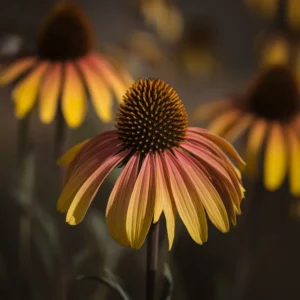
Want your helenium plants standing tall every year? Ever longed for a garden full of beautiful helenium blossoms, amplifying your pride? This article offers handy tips to make it happen. Echoing excitement for gardening rookies and grizzled veterans alike, helenium species become a delightful, gratifying part of your green thumb quest. Get those seeds in the ground and embrace joy!
Check out our latest article for more insights, and follow us on Facebook for updates! and connect with us on Instagram, Pinterest, and YouTube for more inspiration!

